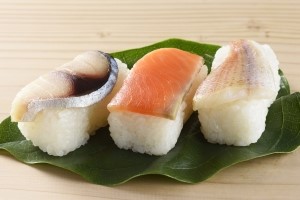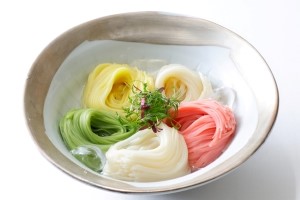

Japan's rich history is deeply connected to the landscapes of Nara Prefecture. Among its many historical eras, the Kofun period stands out, known for its large burial mounds, particularly keyhole-shaped tombs. In Sakurai City, sites from the Jōmon to Kofun periods—such as the Makimuku ruins—have been excavated. This area, known as “Yamato,” is believed to be where Japan's first state emerged in the mid-3rd century. From the late 6th century, the emperor’s palaces, or “kyō”, moved through Asuka, Fujiwara, and Heijō, primarily in Nara, except for brief periods in Osaka and Shiga. In 794, Emperor Kanmu moved the capital to Heian, now part of Kyoto, to distance politics from Buddhist influence.
Nara City, established as the capital in 710 CE, thrived for over 70 years and blossomed with the Tenpyō culture. Nara Park, home to historical sites like Todai-ji, Kohfuku-ji, and Kasugataisha, and around 1,300 deer, harmonizes cultural heritage and natural beauty
Video by Nara City, © Nara City.
Ikoma City, located in northwest Nara Prefecture, is known for Hozan-ji Temple and its natural beauty. Serving as a commuter town for Osaka and Nara, it has been producing over 90% of Japan's chasen, essential for preparing matcha, since the mid-Muromachi period
Video by Ikoma City, © Ikoma City.
Tenri City, in central-northern Nara Prefecture, is a key transportation hub with major highways and national routes. The Kintetsu Tenri Line and JR Man-yō Mahoroba Line intersect at Tenri Station, providing convenient access to Osaka and Kyoto
Video by Tenri City, © Tenri City.
Located in the northeastern part of Nara, Uda City lies in the Yamato Highlands. Mentioned in the Kojiki and Nihon Shoki, it is known for Jimmu legends. Notable tourist sites include Uda Matsuyama, a preserved historic district, and Murō-ji Temple, famous as a women's Koya
Video by Uda City, © Uda City.
Sakurai City, believed to be the birthplace of the Yamato dynasty and once Japan's center, is renowned for its ancient cultural heritage sites, including the Yamada-dera Temple ruins, Monjuin Nishi Kofun, and Makimuku Ruins. It is also famous for Hasedera Temple
Video by Sakurai City Tourism Association, © Sakurai City Tourism Association.
Kashihara City is home to Japan's first capital, Fujiwara-kyo, and the Edo-era Imai-cho with its traditional townhouses. It boasts numerous historic shrines and temples linked to myths and legends, and sites featured in Japan's oldest poetry anthology, the Manyoshu
Video by Kashihara City, © Kashihara City.
Katsuragi City, in northwest Nara Prefecture, is home to Taimadera Temple, founded in 612 CE. Its layout includes national treasures like the Mandala Hall and pagodas from the Nara and Heian periods. Renowned as the birthplace of sumo
Video by Katsuragi City, © Katsuragi City.
Yoshino Town, in central Nara Prefecture, boasts around 30,000 Shiroyamazakura cherry trees on Yoshino Mountain, a UNESCO World Heritage Site since 2004, with historic sites like Kinpusen-ji Temple and Yoshino Mikumari Shrine
Video by Yoshino Town, © Yoshino Town.
Japan's first UNESCO World Heritage Site, registered in 1993, is the Buddhist architecture of the Horyu-ji area. Tradition holds it was founded by Prince Shotoku and Empress Suiko in 607 CE. Despite fires and natural disasters, the oldest wooden structures survived, depicting ancient times
Video by Nara Prefecture, © Nara Prefecture.
Commissioned by Emperor Shomu in the Nara period, the Great Buddha was built with the assistance of 2.6 million people to symbolize universal happiness. Completed in 752 CE, it was rebuilt after fires in the Kamakura and Edo periods. The statue is part of Nara Park
Video by Nara Prefecture, © Nara Prefecture.
Kohfuku-ji Temple developed closely with Nara City. In 710 CE, Fujiwara no Fuhito relocated its predecessor, Umayasaka-dera, from Asuka to Heijo-kyo. As the Fujiwara clan's temple, it grew in prominence alongside the clan's rise to power
Video by Nara Prefecture, © Nara Prefecture.
Established in 768 CE, Kasugataisha attained its current scale in the early Heian period. Its vividly painted shrine, renowned for wisteria, stands within. The Kasugayama Primeval Forest behind, protected as part of the shrine, preserves an ancient landscape
Video by Nara Prefecture, © Nara Prefecture.

Asuka-dera, founded by Soga no Umako in the 6th century, was relocated to Heijo-kyo, becoming Gango-ji. Though the central temple declined after the Heian period, a section called "Gokurakubo" thrived as a popular Pure Land Buddhism site from the 12th century
View on Google MapsTang Dynasty monk Jianzhen, invited by Emperor Shomu, founded Toshodai-ji Temple in 759 CE at Prince Niitabe's residence. Unlike other Nara temples, it is a private institution initiated by Jianzhen. Its main hall was extensively restored from 2000 to 2010
Video by Nara Prefecture, © Nara Prefecture.
Yakushi-ji, built by Emperor Tenmu to pray for Empress's recovery in Fujiwara-kyo, moved to Heijo-kyo in 718 CE. Fire ravaged the once magnificent complex, leaving only the East Pagoda, showcasing Hakuho culture architecture
Video by Nara Prefecture, © Nara Prefecture.
The Nara Palace Site Historical Park, developed since 2008, aims to preserve the Heijo Palace site and evoke the Nara period. Highlights include the reconstructed Suzaku Gate, First Daigokuden Hall, and Daigokumon Gate, showcasing traditional ancient architectural skills
Video by Asuka Historical National Government Park Office, © Asuka Historical National Government Park Office.
Nara-machi preserved traditional Japanese life, like Kyoto and Kanazawa, by escaping WWII damage. Its history dates back to the Nara period as part of Heijo-kyo. It is about a quarter of the southern old town centers around the former grounds of Gango-ji Temple
Video by Nara City, © Nara City.

Established in 1895 and celebrating its centenary in 1995, this historic museum is second only to Tokyo's National Museum. Its brick-built Nara Buddhist Sculpture Hall is designated an Important Cultural Property. Located in Nara Park, it mainly exhibits Buddhist art and archaeological artifacts
Photo by Nara National Museum, © Nara National Museum.
In 686 CE, Monk Dōmyō placed the copperplate Mandala of the Lotus Sutra at Nishino-oka. The main hall, rebuilt by Tokugawa Iemitsu, holds treasures, including the Eleven-faced Kannon statue, and about a thousand cultural assets
Video by Hasedera, © Hasedera.
Nara Park, covering about 660 hectares in the eastern part of Nara City, integrates Todai-ji, Kohfuku-ji, Kasugataisha, and the National Museum, extending to the Kasugayama Primeval Forest. Around 1,300 wild deer roam freely amidst beautiful lawns and ancient pine trees
Video by Nara Prefecture, © Nara Prefecture.

Mount Yoshino, a famous cherry blossom site with 30,000 trees, is part of the "Sacred Sites and Pilgrimage Routes in the Kii Mountain Range" World Heritage Site, registered in 2004. Its blossoms peak from early to late April
View on Google Maps | Local Map1 | Local Map2Yoshino-Kumano National Park spans Mie, Nara, and Wakayama prefectures on the Kii Peninsula. It features mountains, valleys, coasts, and Kuroshio-influenced seas. The park includes World Heritage sites like Kumano Sanzan and Yoshino-Ōmine, showcasing significant cultural landscapes
Video by Ministry of the Environment, © Ministry of the Environment.
Sacred Sites and Pilgrimage Routes in the Kii Mountain Range, including Kumano Sankeimichi Kohechi and Ōmine Okugakemichi, traverse Nara Prefecture, providing spiritual pathways through ancient shrines, lush forests, and stunning landscapes that reflect a rich blend of Shinto and Buddhist traditions
Video by NHK, Nippon Hoso Kyokai, © NHK, Nippon Hoso Kyokai.
Nosegawa Village, located in the southwestern tip of Nara Prefecture near Mount Koya, is known for its sea of clouds. This phenomenon is especially visible on early mornings in autumn and spring, following rain, when fog fills the valleys due to temperature differences
Video by Nosegawa Village, © Nosegawa Village.

Dorogawa Onsen, located at an elevation of around 820 meters along the Yamagami River from Mount Ōmine, is known for its cool climate and is often called the "Karuizawa of Kansai." The area has a nostalgic Showa-era atmosphere
View on Google MapsTotsukawa Onsen Village comprises three hot spring areas: Totsukawa Onsen, Tōsenji Onsen and Kamiyu Onsen. In 2005, it became the first village in Japan to declare that all its bathing facilities use water directly from the source without recirculation
Video by Totsukawa Village, © Totsukawa Village.
Nara Prefecture, considered Japan's heartland, is the birthplace of Japanese cuisine, including tea, udon, sake (rice wine), manju (sweet bean-filled buns), and tofu (soybean curd). These foods are essential to Japanese cuisine. In 2013, "Washoku, traditional dietary cultures of the Japanese," was registered as a UNESCO Intangible Cultural Heritage. Nara actively promotes food education for children, pride in local heritage, and farm-to-table practices. The concept of "Nara Terroir" enhances the fusion of various food cultures within Nara, extending beyond traditional Japanese cuisine.
Under the theme "Nara Terroir," this video explores the gastronomic culture nurtured by Nara's rich nature, history, and heritage, featuring interviews with local producers and restaurants
Video by Nara Prefecture, © Nara Prefecture.
While many countries preserve diverse regional cuisines, Japan also offers its unique culinary journey. This video highlights select dishes, showcasing distinct local specialties and historical influences in the region
Video by Ministry of Agriculture, Forestry and Fisheries, © Ministry of Agriculture, Forestry and Fisheries.

Kakinohasushi is pressed sushi with salt-cured mackerel and vinegared rice wrapped in persimmon leaves. Its origin is uncertain, but one theory suggests fishermen from Kishu sold salt-cured summer mackerel in the mid-Edo period to raise funds
Photo by Kakinohasushi Hompo Tanaka, © Kakinohasushi Hompo Tanaka.
Shōryaku-ji Temple, founded in 992 in southeast Nara City, began brewing sake during the Muromachi period. The resulting sake lees were used for pickling vegetables, forming the basis of Narazuke. Mori Narazuke Shop opened in 1869 near the South Gate of Todai-ji Temple
Video by Mori Nnarazuke, © Mori Nnarazuke.

Specialty shop for yomogi mochi on Sanjo Street in Hashimoto-cho. Using carefully selected domestic ingredients, their yomogi mochi (mugwort-flavored rice cakes) combines softness and chewiness through traditional pounding techniques
View on Google Maps
Miwa in Yamato Province (now Sakurai City), home to Japan's oldest shrine, Omiwa Shrine, is said to be the birthplace of somen. Over 1300 years ago, Tanenushi prayed for relief from famine and created somen, a tradition that spread nationwide
Photo by Miwa Yamamoto, © Miwa Yamamoto.
Yoshino Kudzu is a natural food made from kudzu roots' starch, purified and dried using only underground water during Yoshino's cold period. With fine particles, it offers a delicate texture, ideal for various dishes, including summer sweets and Japanese cuisine
Video by Yasokichi, © Yasokichi.

JR West issues the ICOCA card, a rechargeable smart card for transportation and shopping, akin to Suica. It facilitates easy fare payment on trains, buses, and at stores nationwide. However, it's region-specific and cannot be used for inter-JR region travel, except for special Shinkansen deals via Express Reservations

JR WEST offers various ticket deals and passes catering to different travel needs in western Japan. Find your best from the above link
Kintetsu Railway, operating in Osaka, Nara, Kyoto, Mie, and Aichi Prefectures, is one of Japan's major private railways. With a network spanning 501.1 km, it boasts the longest line among Japan's private rail operators, excluding the JR Group
Nara Kotsu, a Kintetsu subsidiary, offers unlimited local bus rides within a designated area. Presenting this pass grants discounts at various facilities. Nara Kotsu also provides sightseeing buses, airport limousines, and express bus services
Video by Nara Kotsu Bus Lines, © Nara Kotsu Bus Lines.
Nara Prefecture, located in Japan’s Kinki region, is often regarded as the birthplace of the nation. Its capital, Nara City, served as the imperial seat at Heijo-kyo from 710 CE and flourished as a center of Buddhist culture. Even after the capital moved to Kyoto, Nara continued to thrive around its grand temples. The sacred deer of Kasugataisha—depicted in the Kasuga Deer Mandala—embody the region’s spiritual heritage and are still protected and revered today. Nara continues to enchant with a quiet mystique rooted in simplicity and timeless tradition.
Video by Nara Prefecture, © Nara Prefecture.